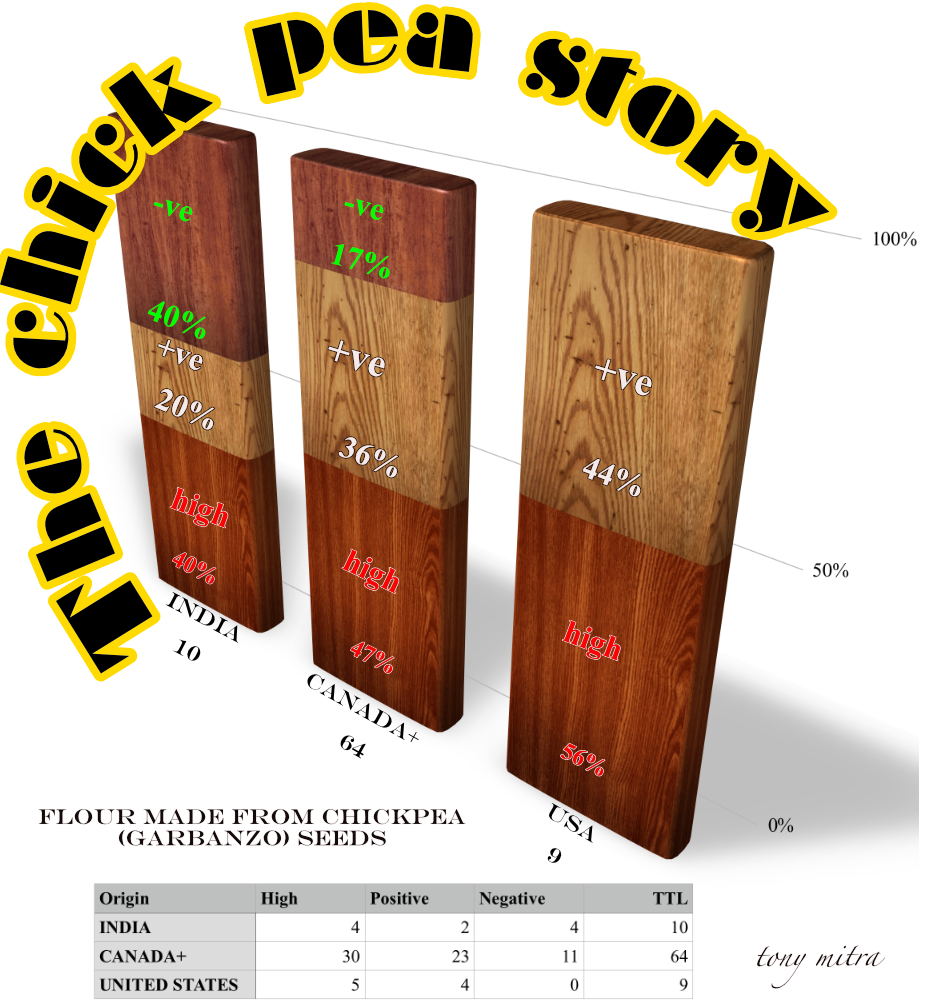Anthony Samsel speaks with Tony Mitra about his latest work on glyphosate – that, apart from causing all other troubles, it also is responsible for damaging our digestive enzymes, so that we cannot even digest the food we eat, and the resultant undigested matter causes all kinds of problems including triggering auto-immune response and can lead to illnesses including serious and life threatening ones. He continues to write scientific papers on his findings, and part of this is pending publication in a science paper soon, co-authored with Dr. Stephanie Seneff.
Monsanto or Dupont apparently did not know this when they did their tests a few decades ago, since this was not known knowledge at the time, on exactly how our enzymes might be affected in presence of synthetic chemicals and how all this ties up with our health and immune systems.
Now that this is being revealed, largely through Anthony Samsel’s investigation and testing of digestive enzymes in presence of glyphosate, using multiple test methods like ELIA as well as liquid and gas chromatography, he is able to conclude that glyphosate can prevent some digestive enzymes from functioning properly and this is another pathway to a cascade of diseases.
Not just that, Monsanto and the regulatory authorities such as EPA should not depend on just standard toxicological tests to determine safety of herbicides like glyphosate. Such investigations should include at least enzymology as well. And any chemical that is able to impair our digestive system, should not be in our food in any level of concentration. Therefore, there is no safe levels in glyphosate and it should not be in our food or in our environment.
This is a 17 minute recording made today while I interviewed Anthony Samsel.
Note from Anthony Samsel
Side effects triggered by Boniva include: bronchitis and arthralgia and myalgia. Below is a comprehensive list of adverse effects.
More common:
- Bladder pain
- bloody or cloudy urine
- chest pain
- cough producing mucus
- difficult, burning, or painful urination
- difficulty with breathing
- fever or chills
- frequent urge to urinate
- lower back or side pain
- nervousness
- pounding in the ears
- shortness of breath
- slow or fast heartbeat
- sneezing
- sore throat
- tightness in the chest
Less common:
- Bloody or cloudy urine
- body aches or pain
- congestion
- difficulty with swallowing
- dizziness
- dryness of the throat
- fast heartbeat
- frequent urge to urinate
- hives
- hoarseness
- itching
- numbness
- puffiness or swelling of the eyelids or around the eyes, face, lips, or tongue
- runny nose
- skin rash
- tender, swollen glands in the neck
- tingling
- unusual tiredness or weakness
- voice changes
Incidence not known:
- Abdominal or stomach cramps
- blurred vision or other change in vision
- bone, joint, or muscle pain, severe and occasionally incapacitating
- confusion
- convulsions
- eye redness
- eye tenderness
- heavy jaw feeling
- irregular heartbeats
- large, hive-like swelling on the face, eyelids, lips, tongue, throat, hands, legs, feet, or sex organs
- loosening of a tooth
- muscle cramps in the hands, arms, feet, legs, or face
- noisy breathing
- numbness and tingling around the mouth, fingertips, or feet
- pain, swelling, or numbness in the mouth or jaw
- sensitivity to light
- severe eye pain
- tearing
- tremor
- unusual pain in the thighs, groin, or hips
If any of the following symptoms of overdose occur while taking ibandronate, get emergency help immediately:
Symptoms of overdose:
- Acid or sour stomach
- belching
- bone pain
- burning feeling in the chest or stomach
- heartburn
- indigestion
- loss of appetite
- pain or burning in the throat
- sores or ulcers
- stomach discomfort, upset, or pain
- tenderness in the stomach area
- vomiting
- white spots on the lips or tongue or inside the mouth
Minor Side Effects
Some of the side effects that can occur with ibandronate may not need medical attention. As your body adjusts to the medicine during treatment these side effects may go away. Your health care professional may also be able to tell you about ways to reduce or prevent some of these side effects. If any of the following side effects continue, are bothersome or if you have any questions about them, check with your health care professional:
More common:
- Diarrhea
- ear congestion
- headache
- loss of voice
- pain in the extremity (arms and legs)
Less common:
- Cough
- difficulty having a bowel movement (stool)
- difficulty with moving
- discouragement
- feeling of constant movement of self or surroundings
- feeling sad or empty
- general feeling of discomfort or illness
- irritability
- joint pain
- lack or loss of strength
- lightheadedness
- loss of interest or pleasure
- muscle aches and pain
- muscle stiffness
- pain, swelling, or redness in the joints
- sensation of spinning
- shivering
- stuffy nose
- sweating
- tooth disorder
- trouble concentrating
- trouble sleeping


